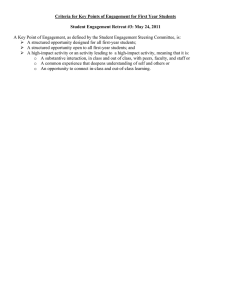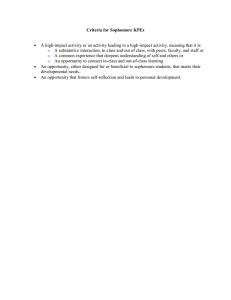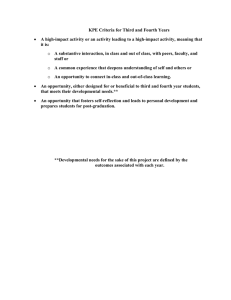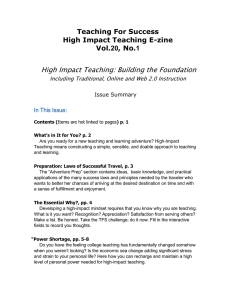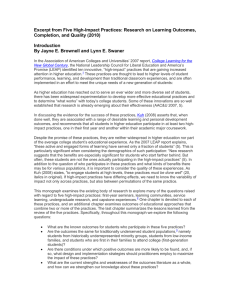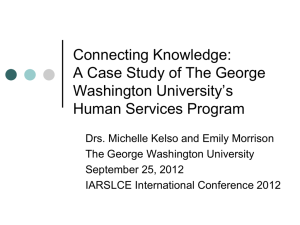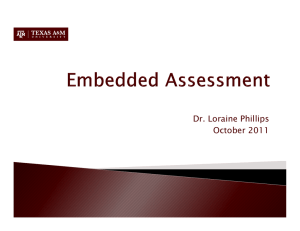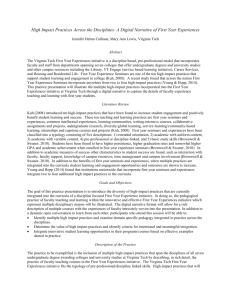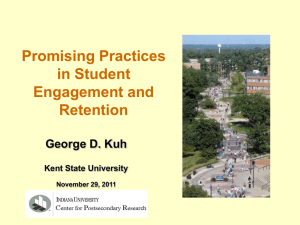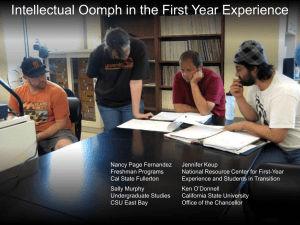1
advertisement
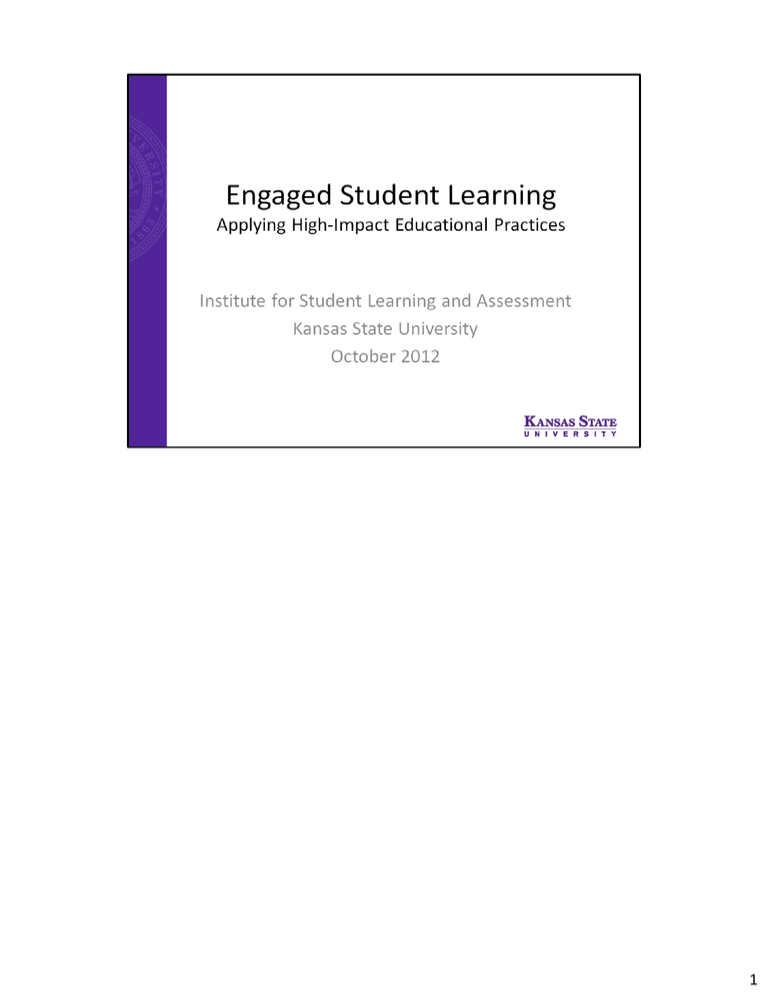
1 Does this look like an engaged learning experience? What is your diagnosis of what might be going wrong for these students? - Required class they don’t care about - Late night in Aggieville - Teacher-centered lecture - No opportunity for applying what they are learning - Limited interaction among peers - Other? 2 Does this look like an engaged learning experience? What is your diagnosis of what might be going right for these students? -Peer interaction -Engaging content or information -Instructor facilitating and/or providing feedback - Other 3 1. They are effortful. High-impact practices demand that students devote considerable time and effort to purposeful tasks. 2. They provide students with rich feedback. High-impact practices offer students frequent feedback about their performance. 3. They help students apply and test what they are learning in new situations. Highimpact practices provide opportunities for students to see how what they are learning works in different settings. 4. They provide opportunities for students to reflect on the people they are becoming. High-impact practices deepen learning and bring values and beliefs into awareness. High-impact educational practice should help students better understand themselves in relation to others and the larger world. 5. They help students build substantive relationships. High-impact practices demand that students interact with faculty and peers about substantive matters over extended periods of time. 6. They help students engage across differences. High-impact educational practices should help students experience diversity through contact with people who are different from themselves and challenge students to develop new ways of thinking. 4 First year seminars and experiences: Highest-quality practices in this area emphasize critical inquiry, frequent writing, information literacy, collaborative learning, and other skills to enhance intellectual as well as practical competencies. Common intellectual experiences: Based on historic notions of a “core” curriculum, today’s version may include a set of required common courses or include integrative studies and/or learning community participation. Learning communities: Key goals for learning communities include integration of learning across courses and involve students with “big questions” that go beyond the classroom. Writing intensive courses: These courses emphasize writing at all instructional levels and across the curriculum. Collaborative assignments: As a practice, this may include study groups within a course, team-based assignments, and cooperative projects and research. Undergraduate research: Most prominently used in the sciences, research experiences can be provided for students across all disciplines. Diversity/global learning: These courses and programs help students encounter other cultures, life experiences, and worldviews. Capstone courses: As culminating experiences, these courses require students to integrate and apply what they have learned. Service learning, community-based learning: These programs provide field-based experientiallearning with community partners. Internships: As another form of experiential learning, internships provide students with experience in a work setting. 5 Brownell and Swaner (2010) reviewed related research studies related to 5 specific practices (svc learning, first year, learning communities, undergrad research and capstones) and their findings suggest that the most common outcomes are: -Higher grades -Higher persistence rates -Intellectual gains -Greater civic engagement -Increased tolerance for and engagement with diversity -Increased interaction with faculty and peers Underserved students benefit more from HIPs •HIPs have positive effect on engagement and engagement positively correlates with persistence. •“Engagement has a compensatory effect for African American students relative to white students in that as the African American students become more engaged they also become more likely to surpass white students in the likelihood they will persist” (Kuh). 6 7 8 Start with self-introductions by the panelists 9
